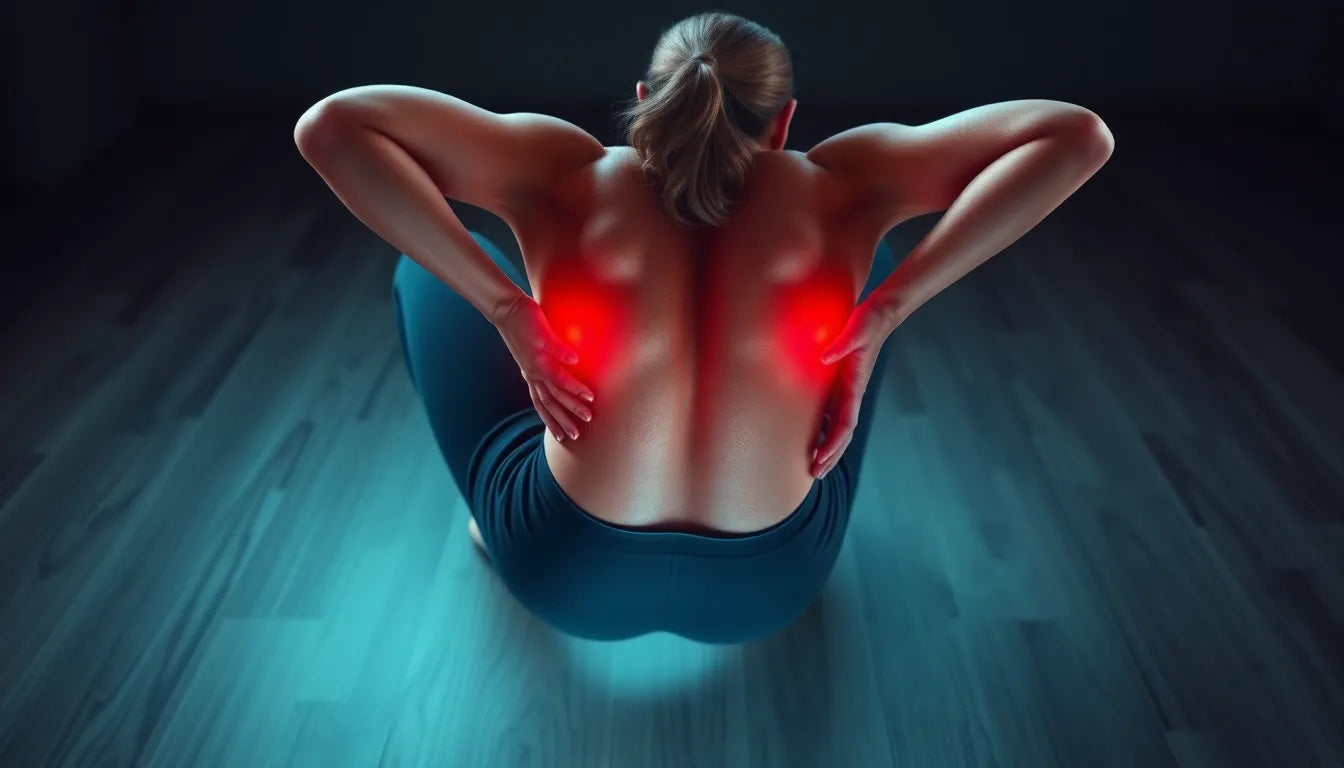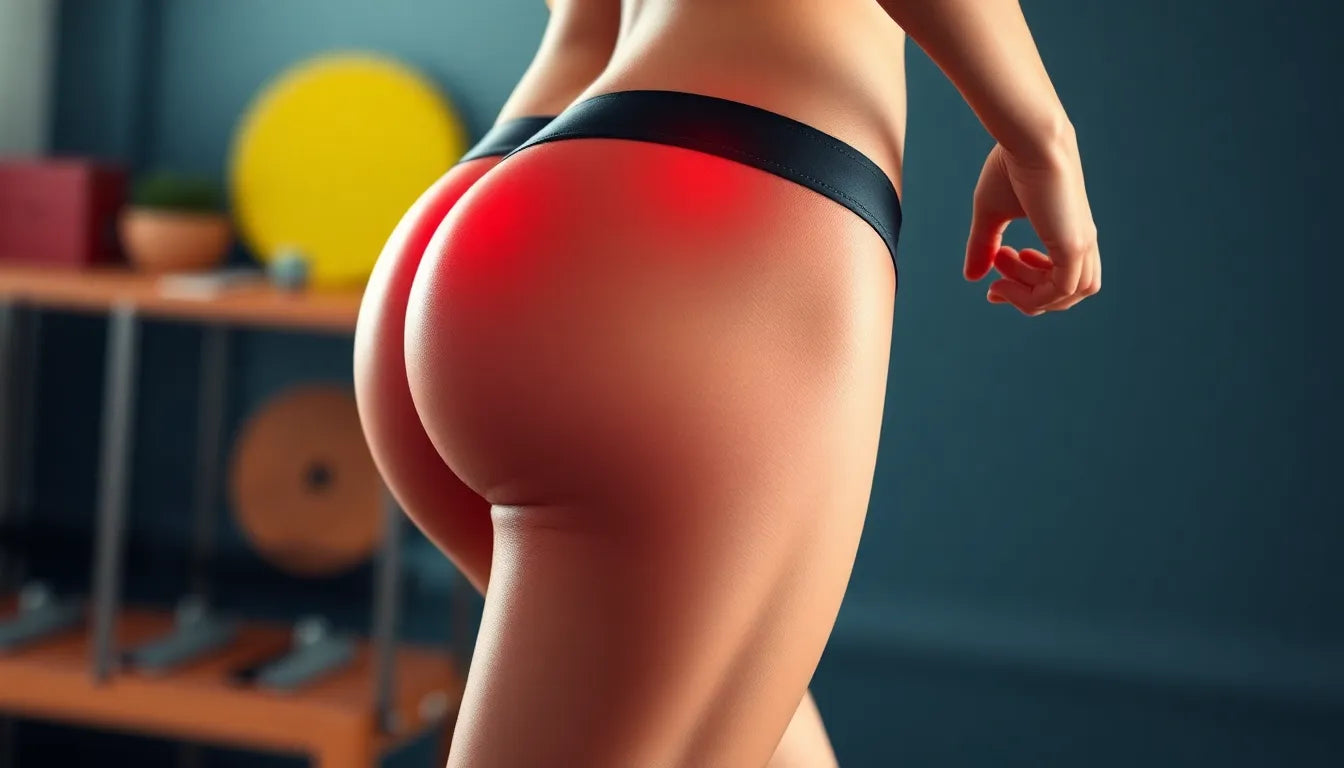Hip pain is a common ailment affecting individuals of various ages and lifestyles. While it might seem like an isolated issue, hip pain can often be linked to underlying spinal conditions, such as a herniated disc. Understanding the connection between hip pain and spinal issues is crucial for effective diagnosis and treatment.
understanding hip pain and herniated discs
A herniated disc, sometimes referred to as a slipped or ruptured disc, occurs when the inner gel-like core of a spinal disc pushes through a tear in the tougher exterior. This condition often arises in the lumbar region, which is the lower part of the spine. The lumbar spine plays a pivotal role in supporting the upper body and facilitating movement, making it susceptible to wear and tear.
When a herniated disc occurs, it can exert pressure on the surrounding nerves. This pressure can manifest as pain not only in the back but also in areas served by the affected nerves, such as the hips. The pain can range from mild discomfort to sharp, shooting sensations that disrupt daily activities.
the link between herniated discs and hip pain
The connection between herniated discs and hip pain primarily involves nerve compression. The sciatic nerve, which runs from the lower back through the hips and buttocks down each leg, is often implicated in cases of herniated disc-related hip pain. When a disc in the lumbar spine herniates and presses on this nerve, it can lead to pain that radiates into the hip region.
This condition is not uncommon and can significantly impact daily life. Activities that involve bending, lifting, or even sitting for extended periods can exacerbate the pain, leading to a decrease in mobility and quality of life. Recognizing this connection is vital for those experiencing hip pain, as it can guide them toward appropriate diagnostic and treatment pathways.
purpose of exploring hip pain and herniated discs
This blog post aims to shed light on the intricate relationship between hip pain and herniated discs. By exploring the symptoms, diagnostic approaches, and treatment options, we hope to provide valuable insights for individuals grappling with these issues. Understanding the root cause of hip pain is the first step toward effective management and relief. Whether you're seeking to alleviate discomfort or prevent future occurrences, knowledge is a powerful tool in navigating the complexities of spinal health.
symptoms of herniated disc-related hip pain
Recognizing the symptoms of hip pain caused by a herniated disc is crucial for timely diagnosis and treatment. Typically, individuals experience sharp, shooting, or burning sensations that originate in the lower back and radiate through the buttocks into the hips. This type of pain often intensifies during physical activities, such as bending or twisting, and can be accompanied by numbness or tingling in the affected areas. In severe cases, muscle weakness may also occur, particularly if the nerve roots are significantly compressed.
These symptoms can severely impact daily life, making routine tasks challenging. It's important to note that while the pain might seem localized to the hip, the underlying issue often stems from the lumbar spine. Understanding this connection can lead to more effective treatment strategies.

Lumbar support belt
Justerbart bælte til støtte og smertelindring i lænden. Ideelt ved diskusprolaps eller lændesmerter.
diagnostic approaches for hip pain from a herniated disc
Accurate diagnosis is essential to differentiate hip pain caused by a herniated disc from other potential causes, such as hip osteoarthritis. The diagnostic process typically begins with a thorough clinical history and symptom assessment. During this phase, healthcare providers will inquire about the onset, duration, and nature of the pain, as well as any accompanying symptoms like numbness or muscle weakness.
Following the initial assessment, a physical and neurological examination is conducted to evaluate the range of motion, reflexes, and any signs of nerve compression. Imaging tests play a pivotal role in confirming the diagnosis. An MRI is the primary tool used to visualize the herniated disc and assess its impact on surrounding nerves. In some cases, CT scans or X-rays may be utilized to rule out other conditions affecting the hip joint.
conservative treatment options
For most individuals, conservative treatment options are the first line of defense against herniated disc-related hip pain. These approaches focus on alleviating symptoms and improving quality of life without resorting to surgical intervention.
One of the key strategies is activity modification. While it's important to avoid movements that exacerbate the pain, maintaining some level of physical activity is crucial for recovery. Physical therapy is often recommended to enhance core strength, flexibility, and mobility, which can help alleviate pressure on the affected nerves.
Medications play a significant role in managing pain and inflammation. Non-steroidal anti-inflammatory drugs (NSAIDs), acetaminophen, and muscle relaxants are commonly prescribed. In cases of neuropathic pain, specific medications targeting nerve pain may be used. For persistent or severe pain, corticosteroid injections can provide relief by reducing inflammation around the affected nerves.
Lifestyle modifications are also essential components of conservative treatment. Weight management, ergonomic adjustments in daily activities, and engaging in gentle exercises can significantly impact recovery. Additionally, home remedies such as heat or cold therapy, topical anti-inflammatories, and the use of TENS units can provide supplementary relief.

Women's Posture Shirt™ - Black
Stimulerer musklerne og forbedrer kropsholdning. Dokumenteret lindring af smerter og spændinger.
By understanding the symptoms and exploring these diagnostic and treatment options, individuals can take proactive steps toward managing hip pain caused by a herniated disc. This knowledge empowers patients to make informed decisions about their health and seek appropriate care, ultimately improving their quality of life.
surgical treatment considerations for herniated disc-related hip pain
While conservative treatments are often effective, there are instances where surgical intervention may be necessary. Surgery is typically reserved for cases where significant nerve compression leads to severe pain, loss of function, or symptoms affecting bladder or bowel control. These are critical indicators that conservative measures may not suffice.
The decision to proceed with surgery involves a thorough evaluation by a healthcare professional, taking into account the severity of symptoms and the impact on the patient's quality of life. Common surgical options include discectomy, where the herniated portion of the disc is removed to relieve nerve pressure, and spinal fusion, which stabilizes the spine. Surgery is considered a last resort, and the potential benefits must outweigh the risks.
distinguishing hip pain origins: disc vs. hip joint
Accurate diagnosis is crucial in differentiating hip pain caused by a herniated disc from that originating in the hip joint itself, such as arthritis. The symptoms can overlap, making it challenging to pinpoint the exact source of pain without professional assessment.
Healthcare providers utilize a combination of patient history, physical examinations, and imaging tests to make this distinction. For instance, hip joint pain often worsens with weight-bearing activities, while disc-related pain might increase with prolonged sitting or bending. Understanding these nuances aids in developing a targeted treatment plan.
frequently asked questions
What are the common causes of hip pain?
Hip pain can arise from various sources, including herniated discs, hip arthritis, muscle strains, and bursitis. Identifying the underlying cause is essential for effective treatment.
How long does it take for hip pain from a herniated disc to improve?
Recovery time varies, but many individuals experience significant improvement within 4 to 6 weeks of conservative treatment. Consistency in following prescribed therapies is key to recovery.
When should I see a doctor for hip pain?
Seek medical attention if you experience severe pain, numbness, weakness, or symptoms affecting bladder or bowel control. Early intervention can prevent complications and aid in faster recovery.
Can ergonomic aids help with herniated disc-related hip pain?
Yes, ergonomic aids such as supportive chairs and cushions can alleviate pressure on the spine and improve posture, reducing pain and discomfort associated with herniated discs.
What lifestyle changes can support recovery from herniated disc-related hip pain?
Incorporating regular exercise, maintaining a healthy weight, and making ergonomic adjustments at work and home can support recovery and prevent future occurrences of hip pain.
Källor
- EmergeOrtho. (n.d.). "Herniated Disc & Hip Pain." EmergeOrtho.
- Spine Center. (n.d.). "Herniated Disc and Hip Pain." Spine Center.
- Pauza, K. (n.d.). "Disc Herniation or Rupture: Disc Causes Hip Pain." Dr. Kevin Pauza.
- Mayo Clinic Staff. (n.d.). "Herniated Disk: Diagnosis & Treatment." Mayo Clinic.
- OrthoIndy. (2017). "Herniated Disc Symptoms." OrthoIndy Blog.
- American Academy of Orthopaedic Surgeons. (n.d.). "Herniated Disk in the Lower Back." OrthoInfo.
- Cleveland Clinic. (n.d.). "Herniated Disk." Cleveland Clinic.
- Instituto Clavel. (n.d.). "L4-L5 Disc Herniation and Hip Pain." Instituto Clavel.
- WebMD. (n.d.). "Treatments for Herniated Disk." WebMD.























